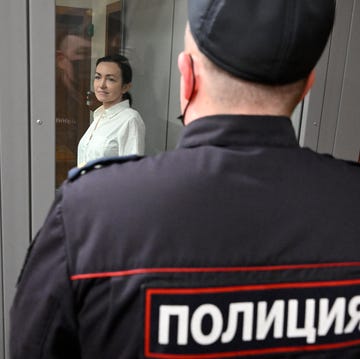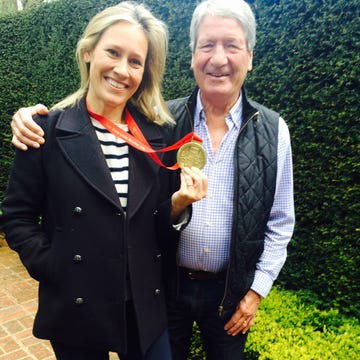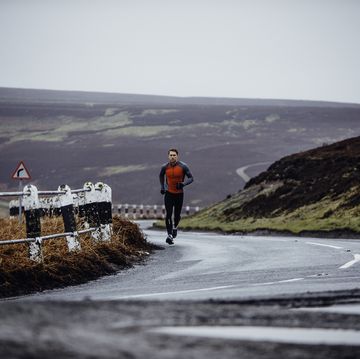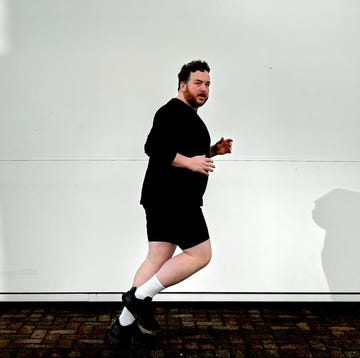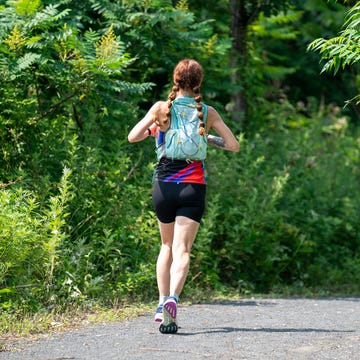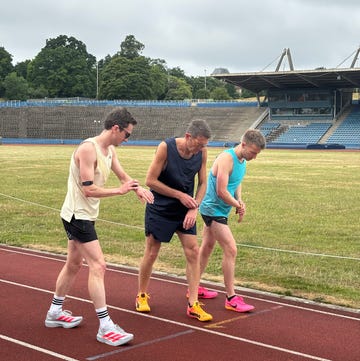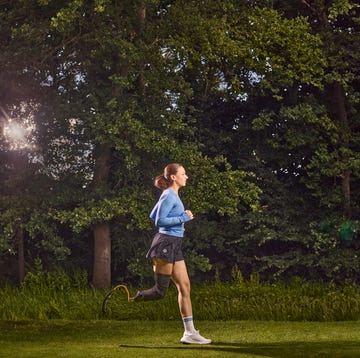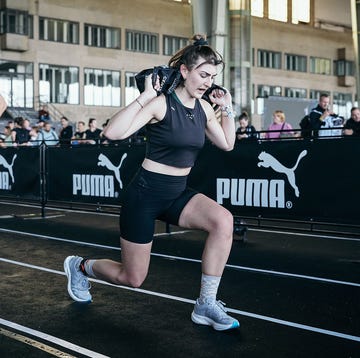After struggling with stomach issues since I was nine, which were followed up with years of tests and misdiagnoses from doctors, I eventually got a colonoscopy which showed that my entire colon was full of ulcers. I was diagnosed with Crohn’s disease at the age of 15 in 2004.
Fast-forward to 2019 and I was in the hospital again due to a bout of food poisoning that caused my Crohn’s to flare up. The doctors did another colonoscopy, which went well – but I then lost consciousness when I was being taken back to my hospital room. When I woke up, I had full-body paralysis, loss of speech and cognitive function, as well as blurry vision.
After many tests and an analysis by a neurologist, I was diagnosed with functional neurological disorder (FND) – a neurological condition caused by changes in the brain network (rather than its structure). Although the condition has no concrete cause yet, research suggests a neuropsychological component such as depression, anxiety or trauma.
What everyone's reading
It’s more likely to happen in people with any medical conditions such as inflammatory bowel diseases, like Crohn’s. It can also cause the symptoms that I was experiencing when I woke up from my colonoscopy.
So, I stayed in the hospital for about a month, doing physical and occupational therapy. Eventually, I was slowly able to start speaking, seeing and thinking more clearly – and moving my full body again.
Despite having been healthy and symptom-free for a while, in 2021, I woke up one morning and suddenly couldn’t move my legs. I was paralysed from the waist down and put into a wheelchair. To this day, I have no idea what triggered this incident of paralysis, but it was likely related to my FND, as relapses and flare-ups are known to happen. I continued with physical therapy once a week, but made minimal improvements with being able to move again.
This major change to my lifestyle left me completely depressed and I shut myself out from the world. I was heavily dependent on music, like Cynthia Erivo’s debut album, to help get me through. I’d been a fan of hers for years and her music gave me a reason to believe and dream about what my life could be.
Less than a year later, I decided that I was no longer going to let my health issues rob me of the life I deserved
I bought myself some three-pound weights and downloaded the Peloton app because I was inspired by Erivo’s Peloton workout videos on YouTube. When I first opened the app and looked at the workouts, I saw Tunde Oyeneyin and was in awe of her. She looked like the healed version of myself.
I started lifting weights from my wheelchair, following along with Tunde’s workouts. Her words always spoke to me. ‘Your mind is your strongest muscle,’ she would say. ‘I will always push you, but I will never let you fall.’ Even though she was speaking to probably thousands of people, I felt like she was talking directly to me, which kept me driven and motivated.
In February 2022, at 32, my legs were still paralysed and I wasn’t progressing the way that I wanted in physical therapy – so I invested in a stationary bike
In physical therapy, we worked on trying to stand and stretch, but it wasn’t successful because my legs weren’t strong enough yet. Plus, my movement was limited because of my feeding tube, which I was given due to my Crohn’s and gastroparesis. My physical therapist said that I had plateaued and should come back in six months’ time. I chose not to return and, instead, continued my Peloton workouts. I even bought a bike, because I was determined to keep getting stronger and I could sit while working out.
But I didn’t use the bike immediately – I’d stare at it every single day at the foot of my bed because I desperately wanted to get on it, but thought I that couldn’t because I was still paralysed. On some days, I’d get in my own head and wonder whether I’d ever get on that bike. On other days, I’d say to myself, ‘I can’t wait – you just watch’.
One day, I finally pulled myself up onto it, using my upper body strength that I built from training with light weights in my wheelchair with Tunde. I started pushing my leg with my hands, which was the ultimate physical therapy. I did that daily for 30 minutes up to two hours, for three and a half months.
Eventually, I felt stronger and was able to stand with assistance from people and a walker, but not independently just yet. I reached out to my physical therapist and they thought that it would be safe enough for me to use a treadmill to learn to walk, so my family bought me a Peloton Tread.
My first time on the treadmill was the most painful day that I had experienced in a long time, because it had been well over a year since I could stand and my feet were severely atrophied. But it was also incredibly rewarding, because I was watching myself get stronger. It hurt to walk at first, so it took a lot of grit to keep getting back on the treadmill – but I did it over again.
After a few months of consistent effort walking on the treadmill, I reached my goal of walking without pain.
I blew my own mind when I started running in February 2023
I did track in middle school and used to run to blow off steam – but when I got sick in high school, I had to stop. I hadn’t thought about running in what felt like forever, given my Crohn’s diagnosis and paralysis.
But, in June 2023, I ran my first 5K after I was inspired by my Peloton Communities, including Black Girl Magic: Peloton Edition, Black Peloton Riders and Team Tunde. I was bitten by the running bug again and, at 35, I’ve now done a total of 12 races, including a 10K. I also did the virtual New York City Marathon over the course of four days.
Most recently, I ran my first half marathon, the New York City Half Marathon, which goes from Brooklyn to Manhattan. I trained for five months, running three times per week, focusing on an easy pace with speed work and long runs. I also supplemented this with weightlifting and cycling.
I ran with the charity Team For Kids to show children who are different and/or who have disabilities like me that they can also do hard things, like running. I had the privilege and honour to run this half marathon with Tunde as my guide and pacer. I asked her if she could guide me through one of the toughest journeys I could take. She willingly and without hesitation said yes.
Running has helped me to realise that I can do the impossible and I deserve to live the joyful life that I desire
During the half marathon, it was incredible to be surrounded by people who all have different stories and journeys – but we shared the same goal, which was to cross that finish line.
To be able to run this race alongside Tunde – the woman who literally saw me and coached me from paralysis to walking and now running – was more than a dream. This half marathon was incredibly beautiful and equally as challenging. I fought through immense pain, moments of doubt and even, at times, wanting to throw in the towel – but Tunde never allowed me to give in or give up. She always spoke to the power and strength in me, reminding me that my mind was my strongest muscle, providing coping tools that helped me to move through the pain. She even held me up when I felt like I was collapsing.
I did this because of my grit, determination and unrelenting will to be a physical representation to the disabled community, to children and to myself. However, I was able to see it through because she is a woman of her word. She pushed me, but never let me fall.
There are definitely still a handful of days each month where I’m dependent on my wheelchair, or have blurry vision or memory issues. Still, the training for this race was more mentally challenging than anything. Over and over again, I trained my mind to believe that I could run this half marathon – my body can and has withstood so much, but it’s my mind that I convinced to help keep myself going. Then, my body had no choice but to come into alignment with it.
My goal was to go out there, have fun, smile, lend a helping hand to those who need it and expect the same in return – and for the love and joy of all those runners to carry me through the heart of New York City. That’s what I did.
FND can improve with the right rehabilitation treatment, so experts say that it’s important to work with a neurologist to identify what is causing symptoms such as those experienced by Alexander.







